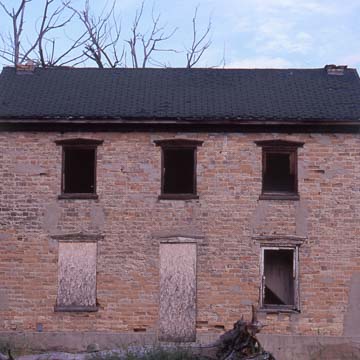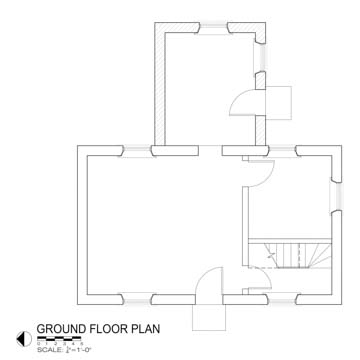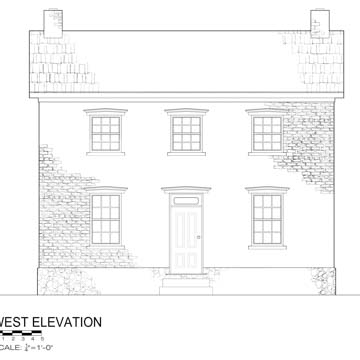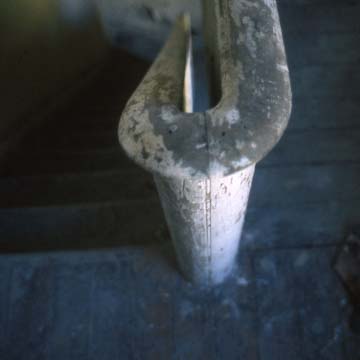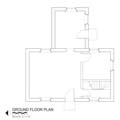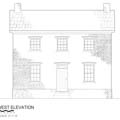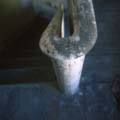The Ethan Pettit Family House offers a useful lesson in the complexities of Mormon housing during the settlement period. This period begins in 1847 with the arrival of the Latter-day Saints in the Great Salt Lake Valley and lasts until about 1870, when the railroad linking them to the surrounding states was completed. Its symmetry and formality underscores the value Mormons placed on order and conformity, while its siting and design expresses desire for individuality. The house and family are tied to the Mormon practice of polygamy. Ethan took several wives. But there is little about the house that would betray such involvement. Ethan’s two wives, Margaret Ellsworth and Catherine Hillard, probably never lived in the house at the same time.
Ethan Pettit was born in 1810 in Hempstead, New York. He married Margaret Ellsworth in 1835 and the couple joined the Church of Jesus Christ of Latter-day Saints in 1840. The couple soon moved to Nauvoo, Illinois, but in 1846, the Mormons were expelled from that city. The couple joined the exodus westward, arriving in Salt Lake City in 1848. The most curious part of the Pettit House begins at this point, because rather than living within the city boundaries, as all good Saints were instructed to do, Ethan and Margaret chose to locate about five miles north and west of the city, settling along the banks of the Jordan River. The Pettits may have been following the lead of their friends, Ira and Levi Reed, two brothers who wanted to live along a river like they did in Ohio. They may have also seen an opportunity for making money, because Ethan, Ira, and Levi soon started a market hunting business, providing freshly “gunned” ducks and geese to outlets in Salt Lake. Levi ended up marrying the Pettits’ oldest daughter, Matilda, in 1852, and Ira their 14-year-old daughter, Margaret, in 1858. The Reeds are listed in the 1870 census as living next to the Pettits in the North Point community (the north end of Salt Lake City’s Nineteenth Ward).
The Pettits’s two-story brick house seems to have been built in the early 1870s, although the records are somewhat confusing. The architecture has both early and later features. The soft-fired brick and the size of adobe blocks (11 x 5 x 4 inches) would suggest an early date, say in the 1860s, but the detailing, which includes architrave casings, transoms over doors, and shouldered pediment window heads, appeared later, more like houses from the 1870s. It seems that Ethan did most of the construction himself and the project spanned a decade or more. Such a scenario would not be unusual in Mormon communities.
The design of the house employs neoclassical elements. It is brilliantly executed. Both the basic proportions and symmetrical composition adhere to mid-nineteenth-century principles. The plan is unusual in that it has a stair passage. Most houses of this size would not have one as they took up a lot of space. Here, this circulation passage is located at the rear rather than center of the house. The stair railing comes together at the second-floor landing in a rather elegant “U” shape, which required not only cutting the banister but also bending the beaded boards on the stair casing.
Like many financially resourceful Mormon men, Ethan had several wives. He and his first wife had marital difficulties and Margaret moved out of their house in April 1860. His diary hints of a divorce from Margaret in 1857, and a later alimony lawsuit, but LDS Church records do not confirm either. The 1867 directory for Salt Lake City shows her having a residence on 6th West between 2nd and 3rd North, and it was in this year that Ethan married Catherine, his second wife. Relationships were always changing, as did the way houses were used.














